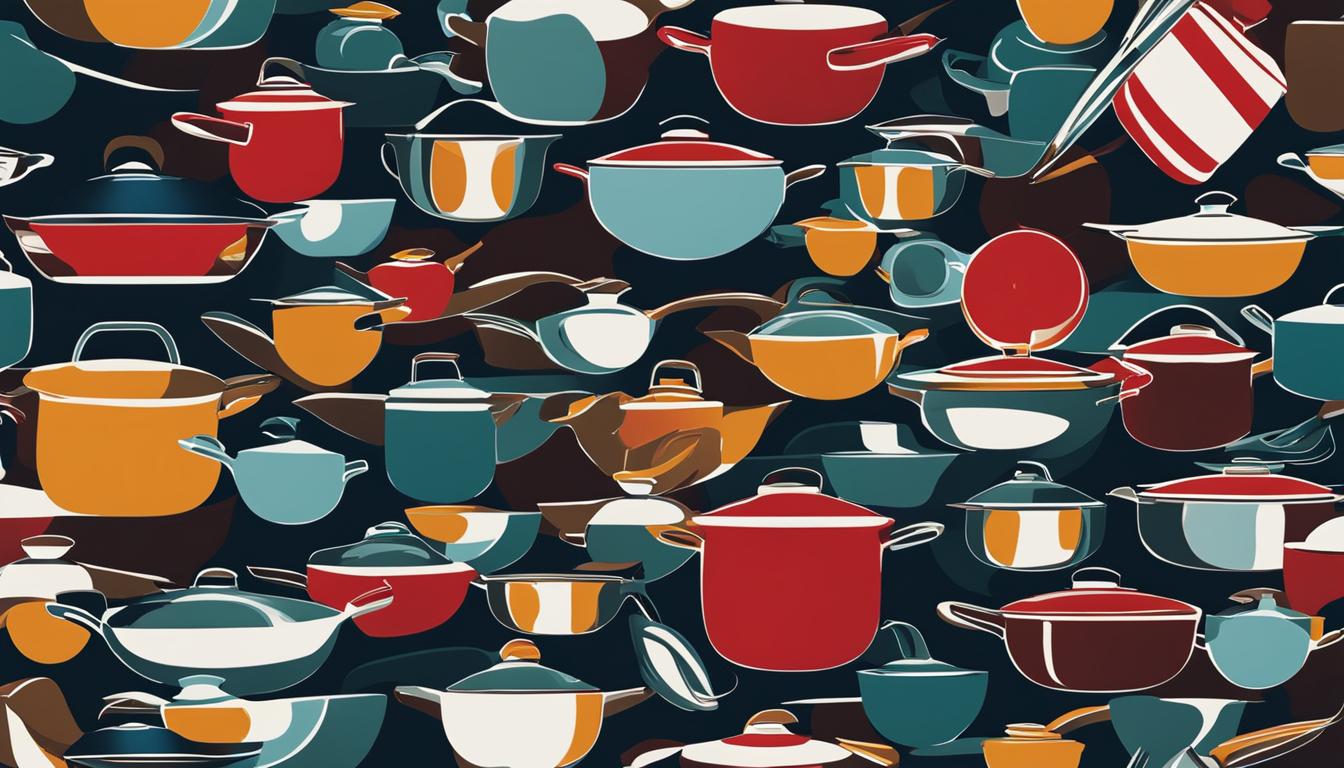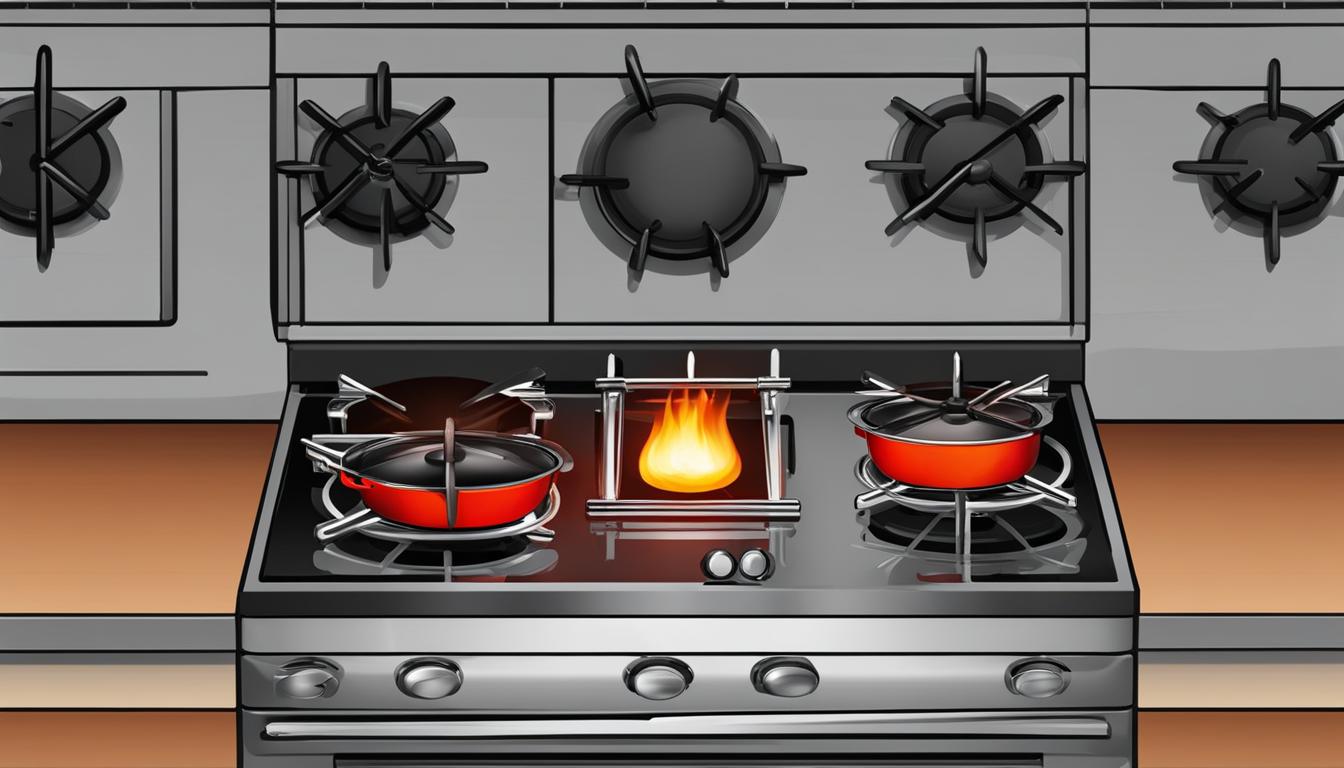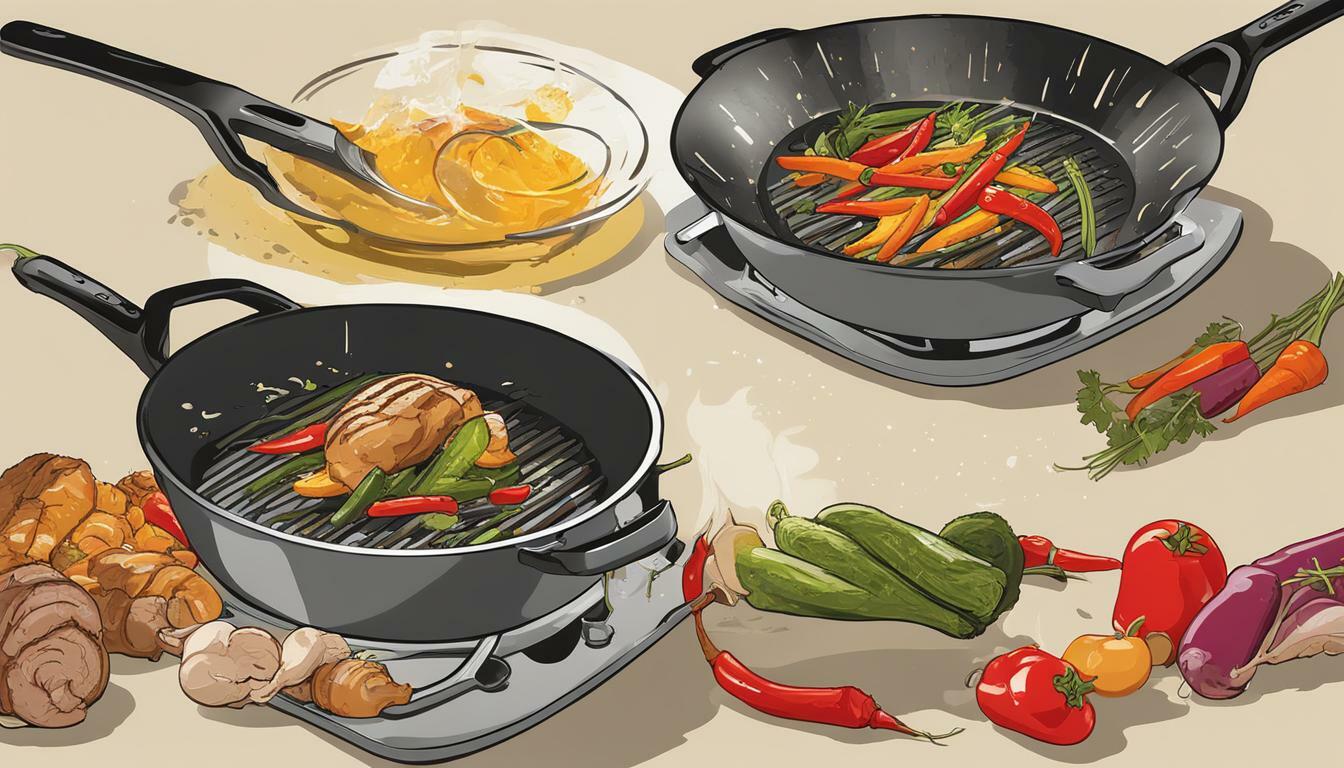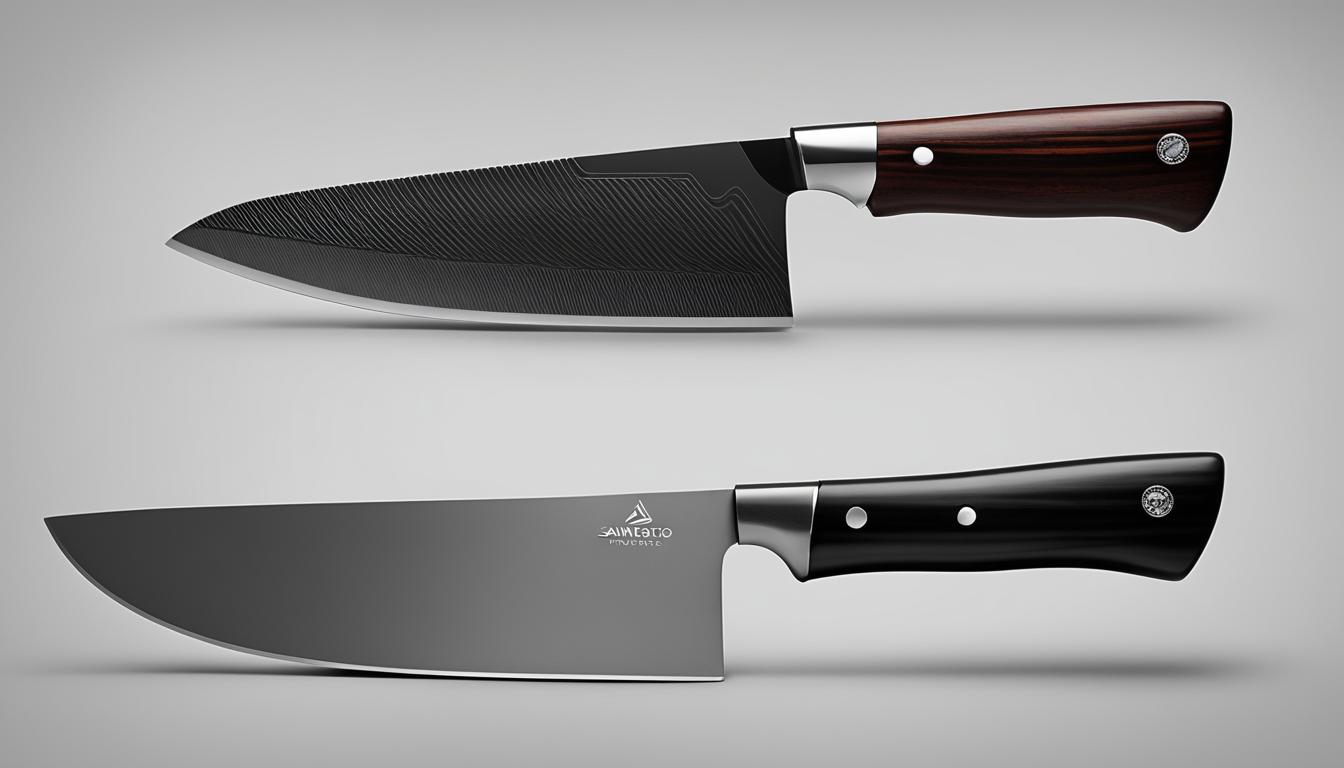Ceramic and stainless steel are two popular options for cookware, each with its own set of pros and cons. Ceramic cookware is known for its colorful aesthetic appeal and non-stick properties. It is heat-resistant, easy to clean, and free from toxic chemicals. However, ceramic cookware may not be as durable and long-lasting as stainless steel, and it requires careful handling to prevent chipping or scratching. On the other hand, stainless steel cookware is highly durable and resistant to rust, stains, and corrosion. It provides even heat distribution and can be used for various cooking methods. However, stainless steel cookware may require more effort to clean and is not naturally non-stick like ceramic. It is important to consider factors such as toxicity, cleaning and maintenance, durability, versatility, and appearance when deciding between ceramic and stainless steel cookware.
Key Takeaways:
- Ceramic cookware is known for its non-stick properties and colorful aesthetic appeal.
- Stainless steel cookware is highly durable and resistant to rust, stains, and corrosion.
- Ceramic cookware requires careful handling to prevent chipping or scratching.
- Stainless steel cookware may require more effort to clean and is not naturally non-stick.
- Consider factors such as toxicity, cleaning and maintenance, durability, versatility, and appearance when choosing between the two.
Toxicity: Are Ceramic and Stainless Steel Cookware Safe to Use?
When it comes to choosing cookware for your kitchen, safety is always a top concern. You want to ensure that the materials used in your cookware are non-toxic and won’t leach harmful substances into your food. In this section, we will explore the safety aspects of both ceramic and stainless steel cookware.
Ceramic Cookware and Health
Ceramic cookware is often praised for being a safe and healthy option. Made from natural materials like clay and minerals, ceramic cookware is free from toxic chemicals such as PFOA and PTFE, which can be found in some non-stick coatings. When properly manufactured and used according to the manufacturer’s instructions, ceramic cookware does not release harmful substances when heated.
Furthermore, ceramic cookware is non-reactive with acidic foods, which means it won’t alter the taste or smell of your dishes. This makes it a great choice for those with allergies or sensitivities to certain metals.
Stainless Steel Cookware and Health
Similarly to ceramic cookware, stainless steel cookware is considered safe to use. High-quality stainless steel cookware is made from food-grade materials and does not leach any harmful substances into your food. It is a non-porous material, which means it won’t absorb flavors or odors from the food you cook.
However, it’s important to note that not all stainless steel cookware is created equal. Some lower-quality stainless steel cookware may contain trace amounts of heavy metals like nickel and chromium, which can potentially leach into your food. To ensure the safety of your stainless steel cookware, look for high-quality brands that are free from toxic non-stick coatings and meet food-grade standards.
| Cookware Type | Safety |
|---|---|
| Ceramic Cookware | Non-toxic and non-reactive with food |
| Stainless Steel Cookware | Safe when high-quality and free from toxic non-stick coatings |
Overall, both ceramic and stainless steel cookware are safe options for your kitchen. However, it’s essential to ensure that you choose high-quality cookware and follow the manufacturer’s instructions for proper use and care. By doing so, you can enjoy safe and healthy cooking experiences with either ceramic or stainless steel cookware.
Cleaning and Maintenance: How to Care for Ceramic and Stainless Steel Cookware
Proper cleaning and maintenance are essential to ensure the longevity and performance of your ceramic and stainless steel cookware. Follow these tips to keep your cookware in excellent condition.
Caring for Ceramic Cookware
To clean ceramic cookware, start by allowing it to cool completely before washing. Avoid thermal shock, which can cause cracking, by not placing hot ceramic cookware under cold water. Instead, let it cool naturally before cleaning.
When it comes to cleaning, use warm soapy water and a non-abrasive sponge or cloth to gently remove any food residue. Avoid using harsh scouring pads or abrasive cleaners, as they can scratch the surface of the cookware.
To prevent scratching, it’s best to avoid using metal utensils when cooking with ceramic cookware. Instead, opt for wooden, silicone, or nylon utensils that won’t damage the non-stick coating.
Caring for Stainless Steel Cookware
Stainless steel cookware requires a slightly different cleaning approach. Before cleaning, allow the cookware to cool down to room temperature. This will make the cleaning process easier and safer.
Start by pre-soaking the cookware in warm soapy water to loosen any stubborn food residue. Then, use a non-abrasive sponge or cloth to scrub the surface gently. Avoid using steel wool or harsh abrasives, as they can leave scratches on the stainless steel.
If there are any burnt-on stains or food stuck to the cookware, you can use a mixture of water and baking soda or white vinegar to help remove them. Apply the mixture to the affected area and let it sit for a few minutes before scrubbing with a non-abrasive sponge.
Both ceramic and stainless steel cookware should be completely dry before storing them to prevent any moisture-related issues, such as rust or mold growth. Consider air-drying them or using a soft towel to dry them thoroughly.
By following these cleaning and maintenance tips, you can ensure that your ceramic and stainless steel cookware stays in top condition, making your cooking experience more enjoyable and prolonging the lifespan of your pots and pans.

Durability and Versatility: Which Cookware Lasts Longer and Offers More Cooking Options?
When considering cookware options, it is important to evaluate their durability and versatility. This section will explore the durability of both ceramic and stainless steel cookware, as well as the cooking options they provide.
Durability of Ceramic Cookware: Ceramic cookware is generally durable, but it requires careful handling to prevent chipping or scratching. While ceramic coatings can resist high temperatures, they can become more prone to damage over time. It is recommended to use wooden or silicone utensils to avoid scratching the surface. Additionally, ceramic cookware should be stored with care to prevent any accidental impact that could lead to breakage. Despite these considerations, with proper care, ceramic cookware can still provide a decent lifespan.
Durability of Stainless Steel Cookware: Stainless steel cookware is highly durable and resistant to damage. Unlike ceramic cookware, stainless steel does not chip or scratch easily, making it a long-lasting option. It can withstand high temperatures, making it suitable for various cooking methods, including searing, frying, and oven use. Stainless steel cookware is also less likely to show signs of wear and tear over time, allowing it to maintain its appearance and usefulness for years to come.
Versatile Cookware Options: Both ceramic and stainless steel cookware offer versatility in the kitchen, although they may have some differences. Ceramic cookware is well-suited for gentle cooking methods such as simmering, sautéing, and baking. It provides even heat distribution and retains heat well, making it great for slow-cooked dishes. On the other hand, stainless steel cookware excels in high-heat cooking methods like searing and browning. It conducts heat efficiently and allows for precise temperature control. Additionally, stainless steel cookware can be used on various stovetops, including induction, making it a versatile choice for different kitchen setups.
| Durability | Versatility | |
|---|---|---|
| Ceramic Cookware | Requires careful handling to prevent chipping or scratching. Can provide a decent lifespan with proper care. | Well-suited for gentle cooking methods, even heat distribution, and heat retention. |
| Stainless Steel Cookware | Highly durable and resistant to damage. Does not chip or scratch easily. | Excels in high-heat cooking methods, efficient heat conduction, and precise temperature control. |
When it comes to durability, stainless steel cookware has the advantage over ceramic cookware due to its resilience and resistance to damage. However, both options can provide versatility in the kitchen, catering to different cooking needs and methods. Ultimately, the choice between ceramic and stainless steel cookware will depend on your personal preferences, cooking habits, and budget.
Conclusion: Choosing the Right Cookware for Your Kitchen Needs
After considering the pros and cons of ceramic and stainless steel cookware, it’s time to make a decision that suits your kitchen needs. Ceramic cookware offers a colorful aesthetic appeal, non-stick properties, and easy cleaning. It is a great option for those seeking a healthier alternative to Teflon-coated cookware. However, durability may be a concern, and careful handling is required to prevent chipping or scratching.
On the other hand, stainless steel cookware is highly durable, resistant to rust and stains, and provides even heat distribution. It can withstand wear and tear, making it a long-term investment for your kitchen. Although stainless steel may require more effort to clean, its versatility and ability to handle various cooking methods make it a popular choice.
Ultimately, the decision between ceramic and stainless steel cookware depends on your personal preferences, cooking habits, and kitchen needs. If non-stick properties and a vibrant aesthetic are important to you, ceramic cookware may be the best choice. However, if durability, longevity, and versatility are your priorities, stainless steel cookware might be the better option. Consider these factors carefully to select the cookware that suits your cooking style and enhances your culinary experiences.
FAQ
What are the main differences between ceramic and stainless steel cookware?
Ceramic cookware is known for its non-stick properties and colorful aesthetic appeal, while stainless steel cookware is highly durable and resistant to rust and stains.
Are ceramic and stainless steel cookware safe to use?
Yes, both ceramic and stainless steel cookware are considered safe options as they do not contain toxic chemicals. However, it is important to choose high-quality stainless steel cookware that is free from toxic non-stick coatings.
How should I clean and maintain ceramic and stainless steel cookware?
Ceramic cookware can be washed with warm soapy water and a non-abrasive sponge, while stainless steel cookware may require more effort to clean. It is recommended to preheat the pan before adding any fats to prevent food from sticking. Both types of cookware should be allowed to cool before cleaning, and harsh scrubbing should be avoided.
Which cookware lasts longer and offers more cooking options?
Stainless steel cookware is known for its durability and longevity, while ceramic cookware may not last as long. In terms of versatility, both types of cookware can be used for various cooking methods, but stainless steel has a wider range of cooking options.
How do I choose the right cookware for my kitchen needs?
When choosing between ceramic and stainless steel cookware, it is important to consider factors such as non-stick properties, durability, cleaning and maintenance, and your personal preferences and cooking habits.
 Skip to main content
Skip to main content


